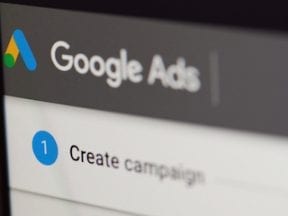Google Ads announced this month two new enhancements for search campaigns: affinity audiences and in-market audiences for seasonal events. The release follows Google’s push for advertisers to layer audiences on search campaigns. Whereas keyword targeting will always be a core staple of paid search, layering audiences allows for greater ad personalization and user insights.
…layering audiences allows for greater ad personalization and user insights.
The most common example of layering audiences on search campaigns is through Remarketing Lists for Search Ads (RLSA). With an RLSA campaign, you can show ads to users who have been to your site and then search on your targeted keyword. RLSA campaigns are useful for reaching shoppers who are in the research mode and need the incentive to purchase.
For example, a shopper may go to a footwear site and browse running shoes. If she then goes to Google and types in “running shoes,” you can show a custom ad to her. You may offer her a discount. Users who haven’t been to your site and search “running shoes” may see a broader ad, but returning visitors see an incentive.
Before delving into audience types, it’s important to distinguish the targeting settings. The “observation” setting allows ads to show for keywords and a particular audience. Most audiences should be set to observation only to collect data without narrowing your reach. The “targeting” setting shows only ads to users who search on your keywords and are a part of your audience. This setting is suitable for RLSA campaigns or if you want to target a narrower audience. Both options can use bid modifiers, meaning you can bid higher or lower on the audiences based on performance.
Let’s delve into audience types.
In-market
In-market audiences consist of users who are researching specific products and services and are thus more likely to buy.

Advertisers can target an in-market audience of users searching for televisions, as an example.
For example, advertisers can target an in-market audience of users searching for televisions. If you hover over the audience, you can see the audience description and estimated weekly impressions.
Within the “audiences” section, you can review performance, as with keywords. This Excel sheet contains the complete list of in-market audiences to target on search. The list also includes the in-market audiences you can target through Display, Shopping, and Video campaigns.
Detailed Demographics
Google has long allowed advertisers to view and target users by demographics with bid modifiers based on age, gender, and household income. In the past couple of years, Google has gone further by introducing detailed demographics. They are:
Parental status.
- Parents of infants (0-1 years)
- Parents of toddlers (1-3 years)
- Parents of preschoolers (4-5 years)
- Parents of grade-schoolers (6-12 years)
- Parents of teens (13-17 years)
Marital status.
- Single
- In a relationship
- Married
Education.
- Current college students
- High school graduate
- Bachelor’s degree
- Advanced degree
Homeownership status.
- Homeowners
- Renters
By layering these detailed demographics on Search campaigns, you gain insight into those users searching for your business or products. You could use this data to test new campaigns on Google or other platforms, such as Facebook. You could set bid modifiers to capitalize on your traffic, similar to in-market audiences. For example, if homeowners convert at a higher rate than renters, you could adjust bids accordingly. You could even create custom combinations, which I address shortly.
Similar Audiences
As a way to find new users who are comparable to your existing remarketing lists, Google allows for “similar audiences,” which are users that Google deems to have similar search behavior to users in your remarketing lists. Google is vague as to what determines “similar search behavior,” but if you are looking for new customers, this strategy is worth testing.
Begin by testing the most qualified similar audiences, as you would in remarketing. These audiences may include:
- Similar to converters.
- Similar to users who added a product to the cart but didn’t purchase.
- Similar to users who viewed a specific page(s) of your site.
Affinity
“Affinity” is the newest Search audience type. It’s slightly broader than in-market, as it reaches users based on lifestyles, passions, and habits.

A merchant selling wall art could reach an affinity audience of home décor enthusiasts.
For example, a merchant selling wall art could reach an affinity audience of home décor enthusiasts. This Excel document provides a list of all available affinity audiences.
You can also create custom affinity audiences using relevant interests, URLs, places, and apps. The screenshot at left shows features I may target for those interested in wall art. My targeting includes three interests, two URLs that sell wall art, and one app that is about wall art. If the ideal affinity audience doesn’t exist, you can create your own.
Combined Audiences
Advertisers can create various audience combinations, such as affinity, in-market, remarketing, similar, and detailed demographics. Along with search keywords, a merchant could target, for example, parents of infants (detailed demographics) and an audience looking for baby and toddler apparel (in-market). Here’s how the audience setup would look.

A merchant could target parents of infants (detailed demographics) and an audience looking for baby and toddler apparel (in-market).
You can test combined audiences at any time. But view the performance of individual audiences first to see how the audiences of, say, “parents of infants” and “baby and toddler apparel” perform.
Enhance Performance
Layering audiences on your Search campaigns allows for expanded and targeted reach. At the very least, advertisers should test a couple of audiences per campaign. To collect data, these audiences will be in observation mode without any bidding adjustments. Audience targeting will never replace keywords, but it’s a good complement to enhance performance.




